Free Tropical Runtz seeds on orders over $150!
Cannabis zinc deficiency doesn’t need to wreak havoc on your cannabis garden, use this useful guide to spot the signs and solve your deficiency before it can cause damage.
Zinc is a critical micronutrient that aids in chlorophyll production in plants, and cannabis is not an exception. If the growing medium lacks adequate zinc, the leaves of the cannabis plants discolor, and the plant’s growth is stunted.
Zinc works together with magnesium and manganese to activate enzymes responsible for producing certain amino acids. If your problem isn’t zinc deficiency, then it may be one of the other cannabis deficiencies.
Furthermore, zinc helps plants withstand cold temperatures, not to forget that it plays a huge role in the breakdown of carbohydrates to sugar.
Considering the considerable role zinc plays in chlorophyll production, it shows its essence in photosynthesis, which helps in healthy plant growth.
Zinc deficiency in cannabis plants results in a discoloration called chlorosis, making the tissues between the leaf veins turn yellow while the veins retain their green color.
In most cases, the discoloration affects the base of the leaves near the stem. The sign shows up on the lower parts of the leaves. If the issue is not rectified sooner, the condition gradually moves up to the plant.
If your plants are suffering from zinc deficiency cannabis, the effects start showing on the lower parts of the leaves. The leaves turn yellow between the leaves, but if you fail to rectify the problem sooner, the discoloration starts spreading to the rest of the leaves and later to the stem and other parts of the plant.
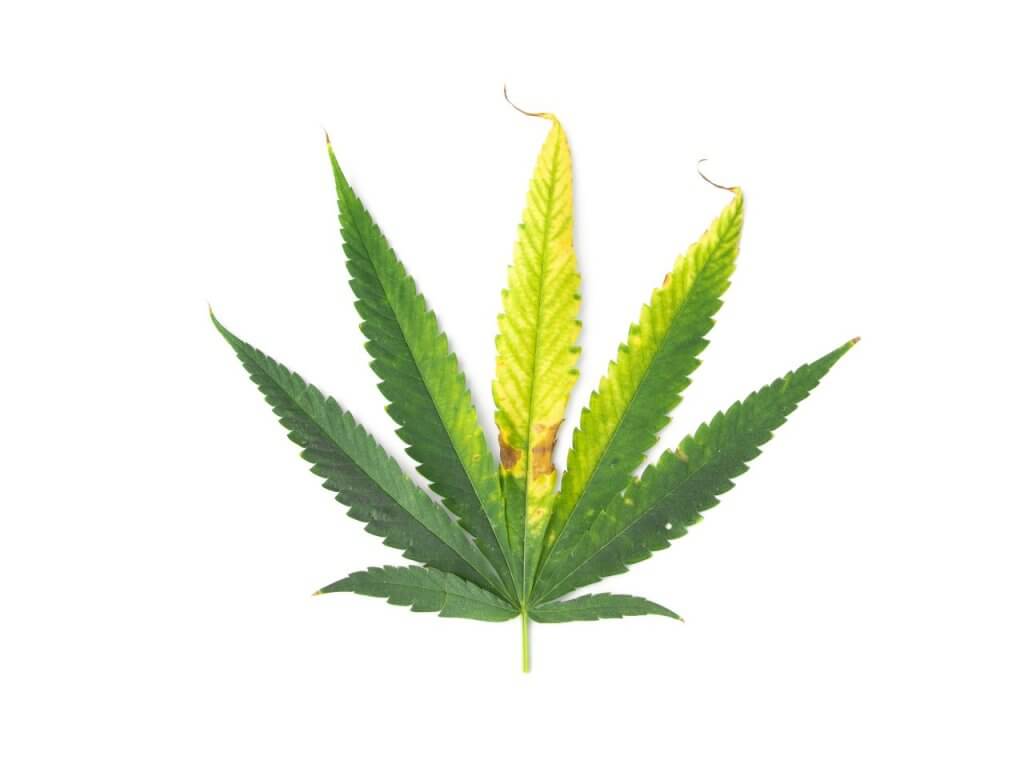
Moreover, if you notice that new leaves are turning white, pale yellow, or bronze, that could indicate a zinc deficiency. Zinc deficiency also affects the growth of stems, which results in minute leaves.
Zinc deficiency in cannabis plants plays a considerable role in stunted root growth. Furthermore, it takes a toll on the root size and branching. However, the effects of zinc deficiency cannabis may not show until the late stage.
Zinc deficiency results in chloroplasts and adequate growth hormones in plants. This can adversely affect plant developments.
In the initial stage, you may realize the spaces between the nodes are getting shorter. Also, new growths look like they are bunching together and the leaves appear tangled. In return, the new leaves experience a hard time opening up while the older flowers turn yellow.
During flowering, zinc deficiency affects the weight and density of the buds. The buds become light and airy, which puts a halt on the yields.
Lack of adequate zinc may result in leaves deformity. The reason is, the plants are unable to produce enough auxins. This leads to abnormal leaf size and shape. You will notice that the new leaves are thinner and contorted compared to the older leaves. Eventually, the leaves may curl or fall off.
There are a range of possible causes of cannabis zinc deficiency. The most common ones include;
Drenching the soil with high pH water: Drenching the soil or growth medium with high pH levels-water is the most common cause of zinc deficiency. As the soil pH becomes more alkaline, cannabis plants are unable to absorb nutrients such as zinc, magnesium, copper, and calcium.
Overwatering the soil: Overwatering the growth medium may drown the roots of the cannabis plants. Consequently, this could make the roots rot. Besides hindering the plants from absorbing oxygen, root rot makes it hard to absorb nutrients, including zinc.
Low zinc levels in the soil: It could be that the growth medium has low zinc levels. Perhaps you haven’t fed the plants. Or you used low-quality fertilizer, resulting in zinc deficiency.
Excessively high phosphorus level: If the phosphorus level in the soil is too high, the plants cannot absorb enough zinc.
The ideal zinc deficiency cannabis remedy depends on the cause. Among the most effective tips to increase zinc for cannabis plants include;
Flushing the plants with water: Flushing your cannabis plants is the best solution to adjust the pH levels of the soil or growing medium. Moreover, flushing the plants with low pH water helps get rid of salt buildup, which could hinder the plants from absorbing nutrients.
Don’t overwater the plants: The commonly-made mistake by cultivators is to overwater their plants. In comparison, this may sound like a great idea, especially during the hot season; overdoing it only causes harm. The excess water damages the roots, making it hard for them to take up nutrients. It may also clog the pores and hinder nutrient absorption.
Use high-quality soil: When using potting soil, it is best to look for the best quality soil for cannabis cultivation. The ideal soil should be rich in zinc and other essential nutrients.
Feed the plants correctly: Invest in good quality fertilizer and feed the plants correctly. Follow the manufacturer’s instructions. And if you have problems determining the right amount, seek expert help on the same.
Yellowing leaves do not always indicate a zinc deficiency. The symptoms may be a result of;
Let an expert help you diagnose your plants correctly and recommend the best solution.
Zinc deficiency can spiral out of control if not rectified sooner. It is critical for you to monitor the behaviors of your plants to determine if they are suffering from zinc inadequacy and understand how to solve the issue. Be cautious not to confuse other problems such as cannabis iron deficiency with zinc deficiency.
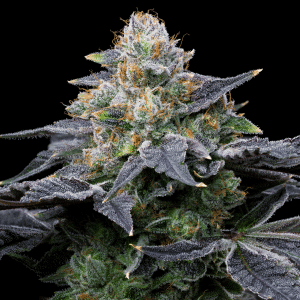
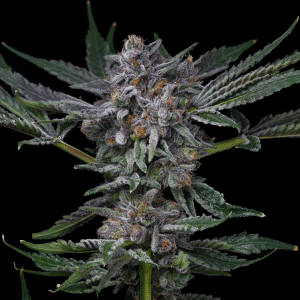
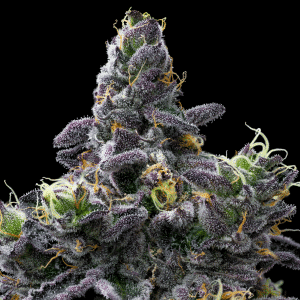
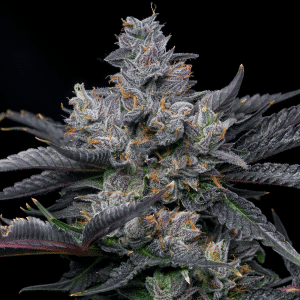
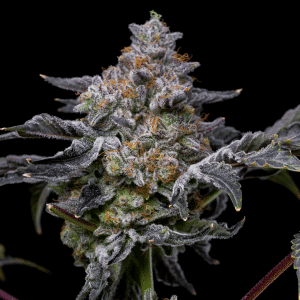
Offers
This product is not for use by or sale to persons under the age of 18. This product should be used only as directed on the label. It should not be used if you are pregnant or nursing. Consult with a physician before use if you have a serious medical condition or use prescription medications. A doctor’s advice should be sought before using any hemp products. All trademarks and copyrights are property of their respective owners and not affiliated with nor do they endorse this product. These statements have not been evaluated by the FDA. This product is not intended to diagnose, treat, cure or prevent any disease. By using this site you agree to follow the Privacy Policy and all Terms & Conditions printed on this site. All products contain less than 0.3% Cannabinoid-compliant with applicable Federal Laws. Please make yourself aware of any and all applicable laws regarding hemp in your jurisdiction. Premium Cultivars accepts no liability or responsibility regarding germination laws in any specific locale state or national jurisdictions.THCA products are not available for shipment to the following states: Hawaii, Idaho, Minnesota, Oregon, Rhode Island, Utah, Vermont *Note: Products with Total THC content above 0.3% must not be shipped to these states.
We want to help you get your hands on the seeds you want, take 20% off your next purchase when you enter your email below!
We want to help you get your hands on the seeds you want, take 20% off your next purchase when you enter your email below!